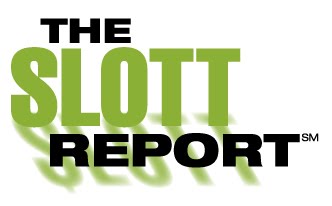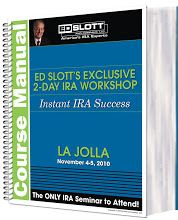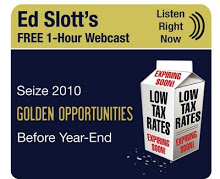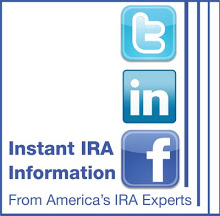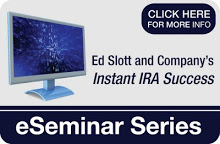Wednesday, April 29, 2009
After-Tax Money in an IRA
Every time after-tax money goes into your IRA you should file Form 8606 with your tax return. This form is a cumulative form. It brings forward your total after-tax deposits from prior years and adds the after-tax deposit from the current year to the total. For this purpose, all your IRA accounts, including SEP and SIMPLE IRAs are considered one account.
Form 8606 also has the calculation for determining what is not taxable any time you take a distribution from any of your IRAs. You cannot take out only after-tax dollars. You must use the pro-rata rule for your distributions. Each distribution will be partly taxable and partly tax-free (think of it as cream in your coffee). If 1% of all your IRAs consists of after-tax monies, then 1% of your distribution will be tax-free. The formula for this calculation is also on Form 8606 and you should file the form with your tax return in any year you take a distribution.
--Jared Trexler and Beverly DeVeny, IRA Technical Expert
-----------------------------------------
Comment, Question, Discussion Topic on your mind? Click on the Blue Comment Link below and leave your thoughts then check back to see what other consumers and advisors think.
*Copyright 2009 Ed Slott and Company, LLC
Quality content
- Siti Non Aams
- Nuovi Siti Casino
- Casino Non Aams Italia
- Casinos Not On Gamstop
- Casino Sites Not On Gamstop
- Online Casino
- UK Casino Not On Gamstop
- Sites Not On Gamstop
- Casino En Ligne
- Casino En Ligne Fiable
- Casinos Not On Gamstop
- UK Casino Not On Gamstop
- Casino Sites Not On Gamstop
- Non Gamstop Casinos UK
- Casino Online Non Aams
- Casino Not On Gamstop
- Meilleur Casino En Ligne France
- Casino Sites Not On Gamstop
- Non Gamstop Casino Sites UK
- Casino Sites UK Not On Gamstop
- UK Casino Not On Gamstop
- Meilleur Casino En Ligne Fiable
- Casino Online Non Aams
- Casino Non Aams
- Casino Sites Not On Gamstop
- Meilleur Casino En Ligne Belgique
- Lista Casino Online Non Aams
- 안전한 파워볼사이트
- Meilleur Casino En Ligne 2026
- Meilleur Casino En Ligne 2026
- Meilleur Casino En Ligne
A Success Story to Pass On
An e-mail came into our inbox from Elite Advisor Mike Branch following last weekend's Elite IRA Advisor Group meetings in Chicago. The text is below:
At the conference in Chicago you asked us to forward any success stories we have experienced. Since Ed's PBS program has started airing in the Twin Cities, I have received about 5-6 new prospects who have contacted me after watching the program and then going to your website. Two of them have become clients. One of them came to me about a month ago and I am currently working on their financial plan. They have a net worth of over $1.5 million. They shopped other advisors and chose me in large part because of my affiliation with Ed Slott and my commitment to understanding and keeping current on IRA laws and regulations.
Once I complete their financial plan and implement the recommendations, I will update you on the final outcome. So far, it looks very promising. This weekend Ed was nice enough to autograph a book for my client, Lynda, that I will give her at our next meeting.
My most important success story, however, is not of a new client that generated business for me. Rather, this is a story of an existing client who had a major IRA mistake that I was able to fix using information I learned in Ed's program regarding the 60-day rollover rules.
This client came to me one day with a cashier's check for about $200,000. This money, he said, was from his bank CD, and he wanted to consolidate that with his other accounts that I was managing. He did not disclose to me that the original source of the money was an IRA. To him, it was just a "CD". So, when he contacted the bank to "cash out" his CD, they gave him a cashier's check and sent him on his way.
About 18 months later, the IRS sent him a letter. The letter stated that he owed over $75,000 in back taxes, interest and penalties. The client claimed that he didn't realize that a CD was an IRA. To make a long story short, we asked for relief from the IRS using information I learned from Ed's program and got it! The IRS allowed my client to add the money back to his IRA without charging him the $75k.
I am 100% convinced that had I not taken Ed's course and signed on to the Elite Advisor program, I would not have known what to do or how to solve this problem for my client. In fact, not only did I know how to handle the situation, but I had to explain to the client's CPA how to solve the problem. Without my Ed Slott training, my client would have lost $75K, and I would have lost an important fee-based client.
So that's it for my success stories, although I continue to benefit from his program in smaller ways on a daily basis.
Please let me know the answers to my questions above or let me know who I should talk to.
Thanks,
Mike Branch
--Jared Trexler
-----------------------------------------
Comment, Question, Discussion Topic on your mind? Click on the Blue Comment Link below and leave your thoughts then check back to see what other consumers and advisors think.
Tuesday, April 28, 2009
An IRA Escape Hatch
Hidden deep within the IRS tax code is an escape hatch for individuals that need the money before age 59 ½. Any distributions before age 59 ½, with few exceptions, will incur a 10% penalty in addition to paying ordinary income tax on the distribution.
The obscure section of the tax code - specifically 72(t) - permits anyone, of any age to withdraw money from an IRA penalty free. The tax code provides three different methods that can be used to withdraw your money with a 72(t) method. Code section 72(t) provides three methods: required minimum distribution method, fixed amortization method and the fixed annuitization method.
However, after you raid your retirement account, you have to keep pulling money out in what the IRS refers to as a “series of substantial equal periodic payments” for five years or until age 59 ½. Whichever is longer, Once a payment schedule is started you cannot change that schedule with one exception. One time and one time only you are permitted to switch methods to lower your payments. You can switch from the fixed amortization method or the fixed annuitization method to the required minimum distribution method and use that method in all subsequent years.
Using 72(t) is not for everyone. The most obvious users would be the truly desperate. Perhaps someone in there 50s, who has been laid off and unable to find work. Withdrawals may be necessary to pay the mortgage and keep the lights on.
If a 72(t) sounds intriguing, don't try it solo. Expert advice is essential. If you make a mistake for some reason, the penalty is severe and retroactive. The IRS will then re-impose the 10% penalty, plus interest, on all the payments ever received.
--Jared Trexler and Marvin Rotenberg, IRA Technical Expert
-----------------------------------------
Comment, Question, Discussion Topic on your mind? Click on the Blue Comment Link below and leave your thoughts then check back to see what other consumers and advisors think.
*Copyright 2009 Ed Slott and Company, LLC
Monday, April 27, 2009
How Clients Can Take From Retirement Savings
CLICK HERE to read the full article, and peruse below for a brief bullet point list of the article's highlights.
- Clients that withdraw money from a 401(k) owe income tax and are subject to a 10% early-withdraw penalty if they take the money out before turning 59 1/2.
- However, the 10% penalty DOES NOT apply to 401(k) withdrawals if the participant leaves the company at age 55 or older.
- Various exceptions to the 10% penalty rule are higher-education and first-time-home-purchase exceptions. These exceptions apply to IRA withdrawals, but NOT distributions from 401(k). When those exceptions apply, it is better to roll the 401(k) money into an IRA and withdraw the funds penalty-free.
- The article also goes in-depth into substantially equal periodic payments (72(t)) and and 401(k) loans WITH CAUTION!
CLICK HERE to read the article in its entirety.
--By Jared Trexler
-----------------------------------------
Comment, Question, Discussion Topic on your mind? Click on the Blue Comment Link below and leave your thoughts then check back to see what other consumers and advisors think.
Friday, April 24, 2009
Ed Slott In the News: April 24th
- Jean Chatzky was cleaning our her inbox this week -- we still have to do that! -- and one question (printed below) needed Ed Slott's assistance. You can read the entire Q&A piece RIGHT HERE. Below is a transcription of the one question.
Dan, unfortunately, it may not be possible to do so. Typically, you can only claim a loss from retirement accounts with a Roth IRA because you didn't get a deduction when you put money into the account, says Ed Slott, an IRA expert. With a 457, which is what you have, and with IRAs and 401(k)s, you usually can't claim a loss because you received a deduction when you made the contribution, and your money is now growing tax-deferred.
- Want to go back to the future? You can in the IRA world by recharacterizing. If you recharacterize an IRA you converted last year, you can convert back to a Roth once 30 days have elapsed, says Ed Slott, an IRA expert and certified public accountant in Rockville Centre, N.Y. CLICK HERE to read the article in its entirety.
-----------------------------------------
Comment, Question, Discussion Topic on your mind? Click on the Blue Comment Link below and leave your thoughts then check back to see what other consumers and advisors think.
Thursday, April 23, 2009
The Slott Report Mailbag: April 23rd
1.
I have terminated employment and have 401(k) assets for distribution. The company matched 70% of my contributions up to 6% of compensation. My contributions consisted of 3% pre-tax and 3% after-tax. If I take a lump-sum distribution, can I roll the after-tax contributions to a Roth IRA and the rest to a regular IRA?
Thanks for your help,
Carl Bode
Answer:
Yes. You can roll the after-tax dollars into a Roth if your adjusted gross income does not exceed $100,000 in 2009. If you convert in 2010 the $100,000 limit will not apply. If you are married and filing separate returns you can not do a Roth IRA.
2.
My wife and I both have 401K accounts from previous employers that we plan to rollover to IRA in 2009. For both of us, part of our 401K accounts include after-tax contributions. What is the best way to handle the after-tax money? Can it be put into a Roth IRA? How do I handle the tax forms on the rollover of the after-tax funds? Our total AGI for 2008 will be over $250,000, but since we are both now self-employed our income in 2009 is unknown, but could be considerably less. I love your book, "Time Bomb", but can't find an answer to this specific question.
Thanks, I'll look for an answer in your report.
Mike Schaffnercell
Answer:
You have several options: 1. If the after tax amount is small you might just want to take it out, no income tax due, and spend it. 2. If you receive separate checks, one for pre-tax and one for after-tax dollars, you can consider a Roth IRA. You can do the Roth in 2009 if your income does not exceed $100,000. In 2010 the $100,000 limit will not apply. If you and you wife are filing separate returns you will not be able to do a Roth IRA. 3. You could put the after-tax money in a traditional IRA and when you take distributions it will lower you tax bill. You will have to pro-rate between the pre-tax and after-tax money. This would the most difficult option. On form 1099 R the entire amount of the distribution will go into box 1. In box 2a, it will show just the taxable amount. In box 7 the code will be G which indicates a direct rollover.
3.
Ed Slott & Company,
I am now retired, and I want to do a direct rollover from my 401k to my IRA. However, the custodian of my 401k says that any disbursements from my 401k must be mailed directly to my current address. The 401k custodian says the disbursement check can be made payable to whoever I wish, and, of course, I can re-ail the check to the new custodian once I receive it. But, will the IRS see this as a direct rollover since the check to the new custodian passes through my hands first? Do I need to do anything special to make sure nothing goes wrong with a transfer like this?
Thanks,
Jay Orman
Answer:
The check payable to your new custodian and sent to you is considered a direct rollover. There will be no 20% withholding. We would recommend that after you send the check to the new custodian you confirm that they received it and it was in fact put into an IRA account.
--Marvin Rotenberg, IRA Technical Expert and Jared Trexler
-----------------------------------------
Comment, Question, Discussion Topic on your mind? Click on the Blue Comment Link below and leave your thoughts then check back to see what other consumers and advisors think.
Wednesday, April 22, 2009
Social Security Sign Up Made Easy
With the shorter form, applicants are not required to fill in every item - only those that apply to their personal situations. Many applicants no longer need to provide an original copy of their birth certificate by mail or in person at a Social Security Office. If additional documents are needed, Social Security will contact you.
You can sign up for Social Security by going to the Social Security Retirement Benefit application at www.ssa.gov/retireonline
--Marvin Rotenberg, IRA Technical Expert and Jared Trexler
-----------------------------------------
Comment, Question, Discussion Topic on your mind? Click on the Blue Comment Link below and leave your thoughts then check back to see what other consumers and advisors think.
*Copyright 2009 Ed Slott and Company, LLC
Tuesday, April 21, 2009
No RMDs For 2009
Does the suspension of RMDs apply to beneficiaries?
Yes, it does. The suspension of RMDs applies to anyone who has a required distribution in 2009 from a defined contribution plan or an IRA - including Roth IRAs (non-spouse beneficiaries have to take RMDs from inherited Roth IRAs).
If I turned 70 ½ in 2008 and did not take a distribution in 2008 (I was going to defer it to the first quarter of 2009), do I have to take that distribution in 2009?
Yes you do. The suspension only applies to RMDs for 2009. A deferred 2008 RMD had to be taken by April 1, 2009. If you still have not taken that distribution, you should talk to your tax advisor immediately.
--Beverly DeVeny, IRA Technical Expert
-----------------------------------------
Comment, Question, Discussion Topic on your mind? Click on the Blue Comment Link below and leave your thoughts then check back to see what other consumers and advisors think.
*Copyright 2009 Ed Slott and Company, LLC
Monday, April 20, 2009
Ed Slott on ABC News Now's Money Matters
CLICK HERE to watch the interview.
Ed went over the Five Pillars to Staying Rich for Life, taken directly from his newest Public Television Fundraising Special Stay Rich for Life! with Ed Slott.
- Know Who You Are And Where You Are
- Educate Yourself
- Avoid Mistakes
- Don't Be Shortsighted
- Take Action in Small, Consistent Steps
The interview went into detail about each of these pillars and touched on other important information for consumers and advisors during these economic times.
CLICK HERE to watch the video in its entirety.
--Complied by Jared Trexler, Marketing Coordinator
------------------------------------------
Comment, Question, Discussion Topic on your mind? Click on the Blue Comment Link below and leave your thoughts then check back to see what other consumers and advisors think.
Friday, April 17, 2009
What's New at The Slott Report
- The Slott Report is now on Twitter! You can instantaneously follow America's IRA Experts by using Twitter. We will "tweet" whenever the urge strikes us with important reminders, blog posts, sponsor recognition and other interesting IRA tidbits. You can even set up Twitter to reach your phone at http://www.twitter.com/ so all of our information can reach you on the go! Our twitter gadget appears on the left-hand side of this screen.
- We want to recognize Senior Market Advisor as our first blog sponsor. So, please click on their image along the left-hand side of the page for more information on Senior Market Advisor Expo. Also, advertising space and rates at The Slott Report will be available shortly!
- As an added addition to The Slott Report, two of our IRA technical experts have joined the blogosphere and will update advisors and consumers on important IRA information each Tuesday and Wednesday, so check back for those posts.
Enjoy the weekend!
Thursday, April 16, 2009
The Slott Report Mailbag: April 16th
Here is this week's installment.
1.
My 84-year-old father died in May 2008 without paying the RMD on his IRA. I inherited a third of it as a Beneficiary IRA (siblings inherited the other two thirds). The custodian did not make any RMD in 2008 to me. It looks like I have until a year following his death to make an RMD, but is that changed for 2009? Also, if no RMD was made in the year he died, is that a problem?
Thanks,
Scott
Answer:
Your RMD for your inherited IRA would not start until year 2009. However, for year 2009, and only 2009, you will not have to take a RMD. You can if you would like to, however, it is not required. In year 2010 you must resume taking your RMDs.
Your father's account should have completed the RMD for 2008 and that RMD should have been payable to the beneficiaries. I would suggest that this RMD for 2008 now be taken out of the inherited IRAs and payable to you and your other siblings as soon as possible.
2.
Just finished listening to Ed and Jim Lange on KOV radio in Pittsburgh. Thanks for a very nice show. My question follows up on a question raised by a listener in which Ed said that after-tax money in a 401K could be rolled directly into a Roth IRA if a separate check for the funds was provided by the fund administrator. Would the 60-day rollover rule apply here? I retired in March 2007 and requested a separate check for my 401K after-tax money which I deposited in a CD with my bank. I made a copy of the check from Fidelity before depositing it. Would I be able to move this money or part of it to a Roth now if I have documentation to show that it was after-tax money from my 401K?
Thanks in advance,
Frank Lancaster
Answer:
Ed is correct as usual. You will have 60 days to have the funds deposited into the Roth IRA. Keep in mind, however, that you must qualify for conversion. In year 2009 your modified adjusted gross income can not exceed $100,000. Beginning in year 2010 the $100,000 limit will not apply.
3.
My friend is 57 years old, has a 401k at work, just lost his job, so can he start to make withdrawals without paying 10% penalty to IRS?
Thanks,
Michael Smith
Answer:
The rule for a 401(k) plan withdrawal without incurring a penalty is age 55 or older plus a triggering event. The triggering event in this case is his loss of his employment.
4.
Dear Ed,
An individual (me!) participates in a tax-qualified 401k plan at work. Recently I was told by the custodian of the 401k that my plan allows me to start taking partial distributions at age 59 1/2. While it sounds too good to be true, he said that I could start taking distributions from this plan even if I was still working for my employer. According to him, this can be done yearly, as long as distributions are at least 12 months apart. What sounded even better was that he said a "partial" distribution could be up to 100% of the money in my 401k. And what sounded best of all was that these distributions - up to 100% - could be taken as a NON-TAXABLE trustee-to-trustee transfer from my 401k into a traditional IRA. To top it all off, the custodian told me that as long as I worked for this employer, I could continue making maximum contributions to my 401k, transferring the money out from the 401k into an IRA at 12 month intervals for as long as I liked - all with no tax due until I begin withdrawing money from my IRA!
At last, a reason to look forward to getting older! I've read your books and know that for estate-planning purposes, having money in an IRA is much preferable to having it in a 401k. Now, I know that as long as my income does not reach the IRS income limitations on IRAs, I can convert all or part of a traditional IRA into a ROTH IRA, paying income tax on the converted amount. So, from what my 401k custodian tells me, I should be able to have my cake and eat it too, by annually rolling over the amount in my 401k plan to my traditional IRA, then converting the amount in my traditional IRA to a Roth IRA and still retain the ability to make an annual IRA contribution ($6,000 if over the age of 50) into either my traditional or my Roth IRA. Sounds too good to be true! Is it?
Thank you!
Eric Stordahl
Answer:
If the 401(k) plan provides for an "in service distribution" than you could take distributions and put them in a traditional IRA and still participate in the 401(k) plan. The once a year rule will not apply here. You may want to do a trustee-to-trustee transfer if possible to avoid any problems.
You can convert from a traditional IRA to a Roth IRA in year 2009 only if your modified adjusted gross income is less than $100,000. In 2010 and beyond, the $100,000 limit will be eliminated. Don't forget, however, when you convert to a Roth IRA income tax will be due on the amount converted.
If you would have otherwise been eligible for a Roth contribution the above transaction would not change that.
5.
I am over age 59 1/2 and I am planning to convert my IRA to a Roth in 2010. Does the 5 year restriction on withdrawals of converted funds apply to a person who is already taking withdrawals?
Thanks,
Pete
Answer:
The 5-year rule applies to earnings on the amount converted. You can always withdraw up to the total amount converted without a penalty. You are age 59 1/2 so there will not be a 10% penalty on a withdrawal.
--Compiled by Jared Trexler and Marvin Rotenberg
---------------------------------------------------
Comment, Question, Discussion Topic on your mind? Click on the Blue Comment Link below and leave your thoughts then check back to see what other consumers and advisors think.
Wednesday, April 15, 2009
Recharcterize Taxes Paid
Well, there is good news and there is bad news. The good news is, if you have already filed a tax return and paid taxes on the conversion, you can file an amended return and get a refund of the taxes attributable to the converted amount.
The bad news is that you cannot get the funds withheld for taxes back into your traditional IRA as part of the recharacterization process. The IRA funds you used to pay the income tax are treated as a taxable distribution to you. They have left the IRA. You can only recharacterize the amount you actually converted.
If you took the funds to pay the taxes from the converted amount in the Roth IRA, you also will not be able to recharacterize the amount used for taxes back to a traditional IRA. You can’t recharacterize amounts that have been distributed from the Roth IRA.
--Beverly DeVeny, IRA Technical Consultant
---------------------------------------------------
Comment, Question, Discussion Topic on your mind? Click on the Blue Comment Link below and leave your thoughts then check back to see what other consumers and advisors think.
*Copyright 2009 Ed Slott and Company, LLC
Tuesday, April 14, 2009
The Undoing of a Roth Conversion
However, assets values have continued to decline and individuals now realize that they paid income tax on the conversion based on a higher asset value. All is not lost. The Internal Revenue Service (IRS) will allow you to recharacterize your Roth conversion. You have until October 15th of the year following the year of the conversion to recharacterize.
A recharacterization means reversing your Roth IRA conversion as if it never happened. Recharacterization cancels out the conversion and the conversion tax is eliminated. You have until October 15th, 2009 to recharacterize a 2008 conversion even if you have already filed your 2009 tax return. If you have already filed your return, you will have to file an amended return on form 1040 X (and an amended state return, if applicable) to receive a refund of any tax paid on your conversion. You have three years from the original due date (or extended due date) of your return to file your amended tax return. The recharacterization, though, still must be completed no later than October 15th.
After you recharacterize back to a traditional IRA you can then re-convert to a Roth IRA. If you wish to re-convert the same funds you have just recharacterized you must wait more than 30 days. The rule states that once you convert and then recharacterize, you cannot re-convert those same funds until the year after the conversion or more than 30 days after the recharacterization, whichever is later.
It may pay to re-convert because you get to put the money back in your Roth IRA and pay tax on only the converted value, rather than at the higher value when you first converted.
--Marvin Rotenberg, IRA Technical Consultant
------------------------------------------
Comment, Question, Discussion Topic on your mind? Click on the Blue Comment Link below and leave your thoughts then check back to see what other consumers and advisors think.
*Copyright 2009 Ed Slott and Company, LLC
Monday, April 13, 2009
In the News: Weekend Edition
- Conversions to Roth IRAs can be tricky -- make sure you work with an educated financial advisor! For example, if you are planning to convert $30,000 you need to divide that amount by the total balance of all your traditional IRAs to get the percentage counted as non-deductible when you make the conversion, said Ed Slott. You can read the rest of the Q&A on the Chicago Tribune's website by CLICKING HERE.
- Eileen Ambrose of The Baltimore Sun wrote a Sunday column about the advantages/dangers of switching traditional IRAs to Roths. Ed Slott pointed out one factor favoring the Roth conversion. Tax rates are very low, IRA account values have dropped with the markets (meaning fewer gains to tax on the conversion), and the outlook for higher federal income taxes is good for those in the top two tax brackets. However, even if Uncle Sam doesn't raise income taxes on those making less than $250,000 -- the cash-starved states may. This favors the Roth conversion.
--Complied by Jared Trexler, Marketing Coordinator
------------------------------------------
Comment, Question, Discussion Topic on your mind? Click on the Blue Comment Link below and leave your thoughts then check back to see what other consumers and advisors think.
Friday, April 10, 2009
Ed Slott In the News: April 10, 2009
- Ashlea Ebeling of Forbes Magazine asked the question, "Should you pay a big lump of taxes now to buy tax-free income later?" If you've been following this blog, you know our answer is YES! A Roth conversion is a way to hedge against the very real possibility that individual income tax rates are headed through the roof. CLICK HERE to read Ed Slott's comments and the rest of the article.
- People who have lost their job should be careful how they tap into their IRA, says this article by Gail Buckner from FOXBusiness. This article is broken up into consumer questions and expert answers, including several answers with assistance from Ed Slott.
You can read current articles in the Press Room by CLICKING HERE.
--Compiled by Jared Trexler, Marketing Coordinator
-------------------------
Comment, Question, Discussion Topic on your mind? Click on the Blue Comment Link below and leave your thoughts then check back to see what other consumers and advisors think.
Thursday, April 9, 2009
The Slott Report Mailbag: April 9
Spring is certainly in the air, but not many accountants are getting to experience the warm up in temperatures because they are nearing the end of tax season.
Don't worry. It is almost over. Almost.
In the meantime, take a break and read this week's version of The Slott Report Mailbag.
1.
Dear Ed and Company,
I would appreciate it if you can give me some answers to my questions. I have an IRA account. I am 72 years of age and single. My IRA account has my daughter's (46 and 45 years of age) as beneficiaries. Upon my death, does the IRS require that my beneficiaries withdraw a yearly RMD until the account is depleted? Or does the IRS have a specific time limit for them to withdraw all of the money?
If the IRS does give them a time limit, can I make a provision with the institution I have the IRA with to specifically state how much I want them to withdraw on a yearly basis without the IRS interfering?
Thank you so very much,
Guiseppina Pellicio
Answer:
Your daughters, as beneficiaries, at your death can choose to inherit your IRA. Assuming they each got 50%, they would separate the account by no later than 12/31 of the year following your death. A year after your death they would have to take distributions based on their attained age at that time. For example, based on the IRS single life expectancy table, if their life expectancy is 30 years they would have to withdraw 1/30 of the prior year end balance and reduce that number (30) each subsequent year until the balance becomes zero. It is important to take each year's required minimum distribution (RMD) to avoid a penalty. They can, however, take more than the RMD without penalty.
You might find it difficult to insturct an IRA custodian to only distribute the RMD from the inherited IRA. The best way to accomplish that would be to consider naming a trust as a beneficiary. In the trust, you can put the type of provisions you would like.
2.
Dear Ed and Company,
Does my RMD from my traditional IRA for 2008 quality for pension and annuity income exclusion from New York State taxable income on Line 29 of 2009 NY State Tax Form IT-201?
If so, I don't have to pay NY State tax on it up to the limit of $20,000. Isn't this a good benefit to inform your readers about?
Your Devoted Reader,
Alan
Answer:
Yes. For NYS income tax, the first $20,000 of retirement income is excluded from income tax. The RMD qualifies as such income. Very few states, however, have that type of provision.
3.
Hello Ed and Company,We are reviewing our IRA rollover beneficiaries. Each of us has 2 IRA rollover accounts with having each one of us a primary beneficiary and our 2 daughters as contingent beneficiaries. One of the IRA custodians permits 'per stirpes' on our 2 contingent beneficiaries and we are meeting with the other custodian to review and update the other 2 IRA accounts. The primary beneficiary, on our case, is spouse with 100% share and contingent beneficiaries (our 2 daughters) have 50% each.
My questions are:
1) Do we need to split or set up 2 separate accounts for each IRA account for our daughters to be able to stretch in case something happens to both of us?
2) Do we need to have separate IRA revocable trust for each daughter?
3) Since each contingent beneficiary share shows 50/50 will this automatically split the IRA when inherited without setting up IRA trusts?
4) We don't think each of us will need each other's IRA (for now), so do we need to just name our daughters as the primary beneficiaries?
5) We also have a current Irrevocable Living Trust and Revocable Living Trust but we are updating it due to some changes, however, our Financial Advisor told us we cannot put our two daughters as trustees on these trusts. Is this true?
I just bought 3 of your books.
Thanks,
B. Felix
Answer:
No, the account can be split in equal shares after the death of the IRA owner. If your wife survives, you make sure she names your children as her primary beneficiary.
You may want to consider having a trust as beneficiary of your IRA for the benefit of your two daughters. However, naming a trust can be difficult with all the rules involved. If you have a good reason to name a trust, then by all means do it.
Yes, the account can be split 50%/50% at death. If it would have to be split it will not be automatic. Make sure, however, that your daughters are the beneficiaries.
If you and your wife do not need each other's IRA it is generally a good idea to name your daughters as primary beneficiaries.
You would want to consider an independent trustee for a trust rather than naming your two daughters as co-trustees.
---------------------
Comment, Question, Discussion Topic on your mind? Click on the Blue Comment Link below and leave your thoughts then check back to see what other consumers and advisors think.
Wednesday, April 8, 2009
Recharacterizations In the Real World
You converted 500 shares of stock to a Roth IRA. They were valued at $100 per share for a total taxable conversion of $50,000. The stock is now worth $60 a share. Or, you converted $50,000 of mixed stocks to the Roth IRA which are now worth only $30,000. In either case, you now want to do a full recharacterization of the amount you converted.
How much do you tell the Roth IRA custodian to recharacterize? Do you tell them to recharacterize the 500 shares? Do you tell them to recharacterize the current value of the stock? Both of those options seem logical, but both are wrong.
You tell the Roth IRA custodian to recharacterize the dollar amount that was converted, even though that is more than the asset is now worth. The IRA custodian should do a calculation called “Net Income Attributable” (NIA) to determine the net amount that will go back to the traditional IRA. This calculation is done on the entire account balance, not just on the assets that were converted.
For both of the conversion examples above, the account owner would request a recharacterization in the amount of $50,000. For more information on doing a recharacterization, see IRS Publication 590 which is available at http://www.irs.gov/. On the left hand side of the screen, click on Forms and Publications.
--By Jared Trexler, Marketing Coordinator
---------------------------------
Comment, Question, Discussion Topic on your mind? Click on the Blue Comment Link below and leave your thoughts then check back to see what other consumers and advisors think.
*Copyright 2009 Ed Slott and Company, LLC
Tuesday, April 7, 2009
Suspension of RMDs for 2009
This suspension will certainly reduce the income tax bite for millions of individuals, at least for year 2009.
The rules for calculating RMDs state that the RMD for the year is based on the prior year-end market value. What happened in 2008 is the account balances were much higher on December 31, 2007 than they are today. That means that the RMD for year 2008 would have been a much larger part of the total account balance than it would normally be and that many account owners were being forced to sell devalued assets to meet their RMDs. Thus, the government is providing relief in 2009 for those individuals who do not need their RMDs to live on.
Individuals age 70 ½ and older may want to consider taking money out of their IRAs in 2009 even though it is not required. The “Bailout Bill” provided a provision for the reinstatement of the charitable IRA direct rollover provision which allows what the tax law calls "Qualified Charitable Distributions" (QCDs) from IRAs to qualified charities. This is for year 2009 only and is due to expire on 12/31/2009. An IRA owner, beneficiary age 70 ½ or older can transfer a maximum of $100,000 in 2009 directly from their IRA to charity and not report the distribution as income for income tax purposes.
An individual who makes a QCD to an eligible charity won't get a charitable deduction but will not pick up any taxable income either. Therefore most individuals come out ahead making QCDs rather than withdrawing IRA funds and then making deductible contributions. This is particularly true if you are using the itemized standard deduction on your tax return.
If you are age 70 ½ or older, an IRA owner or beneficiary and are charitably inclined, you can fulfill your philanthropic intentions though your IRA on a very tax-efficient basis. History may show that this could be the only way to take money out of a traditional IRA without incurring income tax.
---------------------------
Comment, Question, Discussion Topic on your mind? Click on the Blue Comment Link below and leave your thoughts then check back to see what other consumers and advisors think.
*Copyright 2009 Ed Slott and Company, LLC
Monday, April 6, 2009
The Call for a Switch Continues
"I think this is the best time ever," Ed Slott told The Boston Globe. "Three key factors are currently combining to make conversions attractive: A battered stock market, today's lower family incomes, and the likelihood of higher tax rates in the future."
You can read the rest of Globe correspondent Lynn Asinof's report by CLICKING HERE.
Friday, April 3, 2009
New Strategies For You...This Year
The Worker, Retiree and Employer Act -- passed by Congress this past December -- coupled with a steep decline in asset values has made several strategies viable this year, according to this article in The New York Times.
Ed Slott was asked about undoing a Roth conversion -- otherwise known as a recharacterization. Slott told Deborah Jacobs, "It's like getting to bet on a horse after the race is over." By this, Slott means that you are allowed to do this conversion any time until October 15th of the year after you do the conversion -- (the analogy of betting on the horse after the race).
Slott also advises that you create another Roth IRA each time you do a conversion rather than mixing funds in an existing Roth account.
Thursday, April 2, 2009
The Slott Report Mailbag: April 2, 2009
Below is this week's edition of The Slott Report Mailbag.
1.
Ed,
Would there be tax or future income advantages by moving current 401 funds into a managed-payout fund at this time? I am 62 years old and my fund accounts are with Vanguard.
JWK
Answer:
I assume the managed income fund will be held in the 401(k) plan or in an IRA. In that case there would be no advantage or disadvantage on distributions being distributed. It will all be taxed as ordinary income in the year received. If money is taken out of the 401(k) plan to be put into a managed income fund it would be immediately taxable.
2.
Ed and Company,
I understand that there will be changes in 2010 regarding the conversion from traditional IRA to Roth IRA. Is there a way that I can obtain a list of these changes?
Answer:
The major change in year 2010 for Roth IRAs is that everyone will be eligible to convert from a traditional IRA to a Roth IRA. In year 2009 there is a modified adjusted gross income(MAGI) threshold of $100,000. If your MAGI exceeds $100,000 you do not qualify to convert to a Roth IRA. In year 2010 that will be eliminated.
3.
I plan to convert my traditional IRA to a Roth IRA now. Can I wait until April 15, 2010 to pay the income tax due on the conversion without penalty?
Thank you,
Norman Welch
Answer:
Yes you can wait to pay the income tax in April 2010. However, you should consult with your tax advisor to see if an estimated tax payment should be paid earlier than April 2010.
4.
Mr. Slott and Company:
My wife and I have self directed IRAs totalling approximately $60,000.00. We own a small print, copy, shipping business that has a business loan of approximately $140,000.00. Is there any way in which our IRAs can "buy down" the business loan where the IRAs would take the place of part of the business loan and thereby the business would repay the loan with interest to the IRAs?
We got in the last 30 minutes or so of your broadcast on the Denver, CO PBS channel. We live north of Denver outside of Fort Collins. We enjoyed your program and will most likely be converting our traditional IRAs to Roths.
Thanks,
Gerry & Peggy
Answer:
First, thanks for tuning in. The internal Revenue Service tax code identifies what is referred to as prohibited transactions. One such prohibited transaction is parties in interest. The fact that you own the business and your IRA will be loaning the money would indicate that this would fall under a prohibited transaction.
5.
Good Morning!
If I convert part or all of my traditional IRA into a ROTH in 2010 when will the 5 year period commence? Will there be different times for the 5 year period depending on when I pay the taxes on the conversion?
Thank you.
Answer:
The 5 year period will start on the date you convert the original amount. If you then convert amounts later into the same account the 5 year period would revert back to the original 5 year period. The year you convert the 5 year period would start January 1st of that year even if you convert later in the year.
6.
Can a person who is under age 59-1/2, withdraw money from their Roth IRA(account has not been opened for five years), to buy their first home? If so, are there taxes or penalty?
Sincerely,
Gary Webb
Answer:
If you are a first-time home buyer, defined as not owning a home in the last 2 years, you can take out a maximum of $10,000 without incurring a penalty.
Wednesday, April 1, 2009
"Get educated, get visible, get remembered"
"People make up more in good tax planning than they lose in the market, but the opposite is also true: You can lose everything because of poor tax planning," Mr. Slott said. "If your client loses that money, so do you."
Ed spoke on Tuesday at InvestmentNews' third annual Retirement Income Summit in New York. One of Slott's main messages -- "Higher federal and state taxes are coming, but investment values are depressed and a bonus awaits in the Roth IRA for the tax-savvy advisor."
CLICK HERE to read the entire recap of Slott's presentation.
